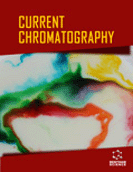Abstract
Introduction: The development of new stationary phases is a continuing aspect in the improvement of separations in HPLC. Relatively few new separation materials get beyond the exploratory stage as reported in the research literature and become commercially viable products with wide-spread use. One such class of stationary phases, those based on silica hydride and chemically modified silica hydride, has become more universally accepted, particularly as some of their unique features with respect to columns utilizing ordinary silica are discovered.
Objective: This review covers some of the basic fundamental properties of silica hydride-based separation materials highlighting where these are unique or enhanced with respect to conventional materials.
Method: In particular, the aqueous normal phase mechanism for the separation and retention of polar compounds is discussed in some detail as well as the dual retention aspect of these phases since all hydride stationary phases also function in the reversed-phase mode.
Results: This dual retention capability and other features based on the hydride surface are used to distinguish these materials from hydrophilic liquid interaction (HILIC) chromatography, a format also used for the analysis of polar compounds.
Conclusion: Silica hydride phases offer unique advantages over other types of separation materials including versatility, stability, fast equilibration as well as both excellent intra-day and inter-day reproducibility.
Keywords: Aqueous normal phase chromatography, dual retention capabilities, pharmaceutical analysis, food analysis, HPLC, metabolite analysis.
 22
22 2
2 1
1 1
1

















